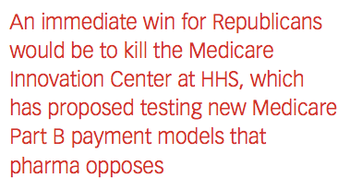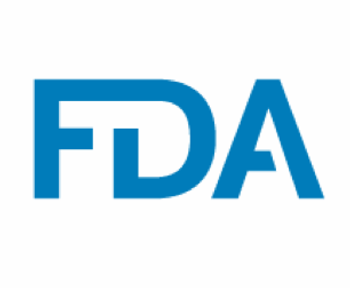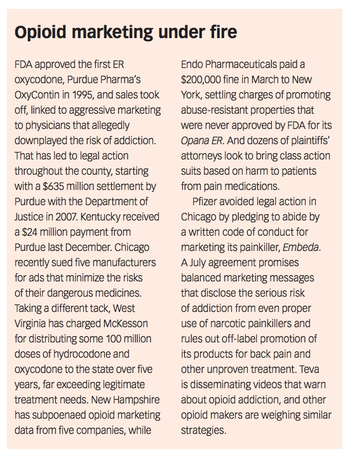
The long-cherished dream of finding a European approach to assessing the value of new medicines seems to recede further with every step taken to pursue it, writes Reflector.

The long-cherished dream of finding a European approach to assessing the value of new medicines seems to recede further with every step taken to pursue it, writes Reflector.

2016 has been the year of the unpredictable - and the uncertainties this has generated will multiply and dominate the agenda in Europe in 2017, writes Reflector.

Congress's enactment of 21st Century Cures legislation may have given pharmaceutical manufacturers an early Christmas present, but some concerns are being voiced, writes Jill Wechsler.

Republican control of Washington promises overhaul of healthcare and medical product regulation.

Significant uncertainty surrounds the future of drug pricing reform, causing industry observers to take a closer look at the policy views of the president-elect, state and Congressional lawmakers, and the general public.

Congress took a major step yesterday towards shoring up FDA operations and biomedical research supported by the National Institutes of Health with House passage of the 21st Century Cures bill.

The FDA’s Dr. John Whyte offers his perspectives on patient centricity and the issues that FDA and industry are facing.

The European Medicine Association is determined keep open all options on the future of drug approvals in advance of a crucial meeting in December, writes Peter O'Donnell.

The surprise victory of Donald Trump opens the door to new strategies for providing healthcare to Americans, including coverage and oversight of prescription drugs.

Policymakers, payers and pharma companies weigh strategies for rationalizing drug prices . Jill Wechsler reports.

The FDA approved Sarepta’s Exondys for Duchenne muscular dystrophy despite little evidence of efficacy, leading many to regard the decision as not being a model for future drug development.

FDA’s new Office of Tissues and Advanced Therapies will oversee a growing range of cellular and genetic products.

When lobbying tips the scales: a path to drug approval.

Despite notable deficiencies in the frameworks for assessing the value of prescription drugs, these initiatives are expected to have a major impact on drug utilization and reimbursement.

ISPOR's Value Assessment Stakeholder Conference showed its Special Task Force still reaching for clarification around the subject, writes Ansis Helmanis.

PDUFA VI to enhance FDA staffing, revise fees and expand evidence for drug development.

The UK is moving closer to aligning its two approaches to regulating drug pricing - the voluntary PPRS and statutory price cuts - but the headaches are likely to continue, writes Leela Barham.

The campaign to achieve greater transparency in clinical research activity regulated or funded by the federal government, including the results of those studies, is moving forward after months of debate.

Traditional sales and pricing practices face legal challenges and political backlash.

$7.5 billion in pharma “transfers of value” made in 2015 has caught the attention of the DoJ and federal and state prosecutors investigating fraud. Jill Weschler reports.

Traditional sales and pricing practices face legal challenges and political backlash, writes Jill Wechsler.

Reflector outlines the obstacles ahead for Europe's revamped Innovative Medicines Initiative.

Analysts examine investment and business factors that shape supply disruptions.

Zika vaccine development is hindered by technical challenges and funding shortfalls, writes Jill Wechsler.

Could the new Vermont Drug Transparency law “lead the US Pharmaceutical industry to an awful end”? Tom Norton reports.